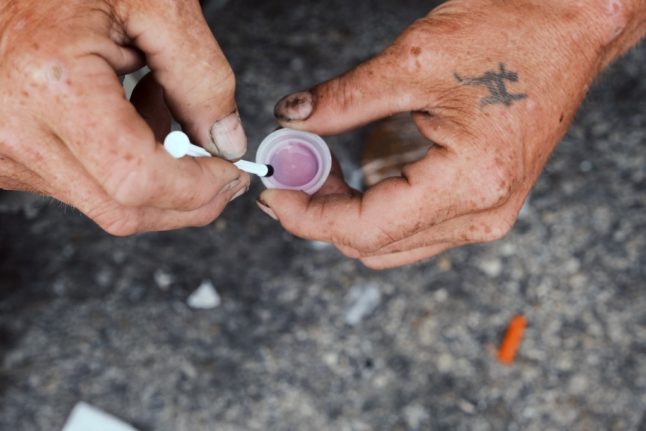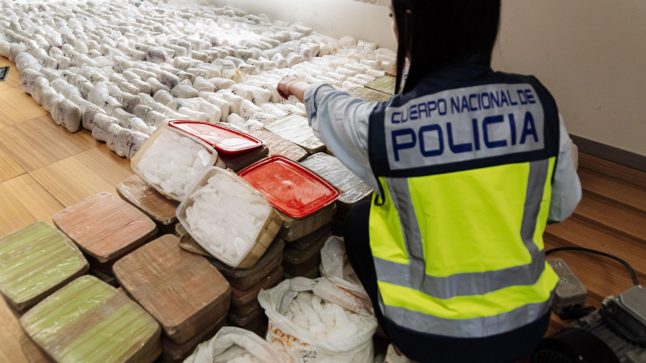Fentanyl is a type of synthetic opioid used as an analgesic to deal with chronic and severe pain.
According to the Centers for Disease Control and Prevention (CDC) in the United States, it’s 50 times stronger than heroin and 100 times more potent than morphine. Just a few milligrams of it can be lethal.
In the US, fentanyl used to be available under prescription from a doctor as a type of painkiller, but thousands of people became addicted to it as a result and the situation got out of control with people turning to the black market instead.
Today, in the US it is often added to other drugs because of its extreme potency, which makes the drugs cheaper and more addictive.
According to the CDC, over 150 people die every day from overdoses related to synthetic opioids like fentanyl.
In 2021, it took the lives of around 70,000 people in the US alone and the Washington Post revealed that it is now the leading cause of death for Americans aged 18 to 49.
READ ALSO: What are the penalties for drug possession in Spain?
So why isn’t it a problem in Spain?
Spain is in fact the fourth country within the Organisation for Economic Co-operation and Development (OECD) where the most fentanyl is consumed, behind the US, Germany, and the UK.
Despite this, fentanyl use hasn’t become the widespread crisis in Spain as it is in the US.
In Spain, like other opioids, fentanyl is used as a painkiller. Here it is typically prescribed to help cancer patients, but can also be prescribed to other patients who suffer chronic pain and cannot lead a normal life without it.
It is usually given in the form of controlled-release transdermal patches. This makes up 55 percent of all fentanyl-containing medications in Spain. The remaining 45 percent is found in the form of tablets, nasal solutions, or injectable solutions.
This use of fentanyl in Spain is fully controlled and you can only get it from a pharmacy with a prescription from a medical professional.
According to Rafael Areñas Velasco, Vice President of the College of Pharmacists of Madrid, however, most pharmacies do not usually stock it in their warehouses due to their relatively low demand and to avoid possible theft.
They usually only carry other strong opioids instead. Establishments are only required to have three vials of morphine available for emergencies.
READER QUESTION: Are there limits on bringing medicines into Spain?
Every time a drug is requested from the pharmacist, the pharmacy must present an official drug voucher, and note the request in the system. This also contains the identity of the person to whom the medicine is sold and a record of the quantities supplied is kept.
These reports are sent to an administrative body, which then controls how much it dispenses.
According to Areña, pharmacies that have Fentanyl stocks only have the patches, which are not useful for recreational consumption. However, the theft may be a problem from hospitals, which have fentanyl in a liquid state.
Could fentanyl be a problem in Spain in the future?
Fentanyl is already available in Spain and authorities are worried that it could become a problem.
There were estimated 5,800 overdose deaths in the EU in 2020, according to the European Monitoring Centre for Drugs and Drug Addiction (EMCDDA).
In addition to this, according to the latest data available from the Spanish Medicines Agency, the consumption of prescribed fentanyl grew from 1.66 to 2.77 DDD/1000 inhabitants/day in Spain between 2010 and 2021.
News site Cuatro reported that there are more and more cases of clinics having to care for people with symptoms similar to those presented by drug addicts of fentanyl in the US.
In a report from Europol, the agency warned that drug cartels from Mexico may “attempt to broaden the portfolio of drugs trafficked to the EU by either trafficking them to the EU drug market or by assisting in the production of those drugs, like fentanyl, in the EU”.
Europe’s heroin market may soon be in short supply, however, making way for drugs like fentanyl to fill the gap.
Almost all heroin consumed in Europe comes from Afghanistan, but in April 2022, the Taliban imposed a ban on poppy cultivation.
As of 2023, however, the European Monitoring Centre for Drugs and Addiction reports that heroin still “remains Europe’s most commonly used illicit opioid”.



 Please whitelist us to continue reading.
Please whitelist us to continue reading.
Member comments